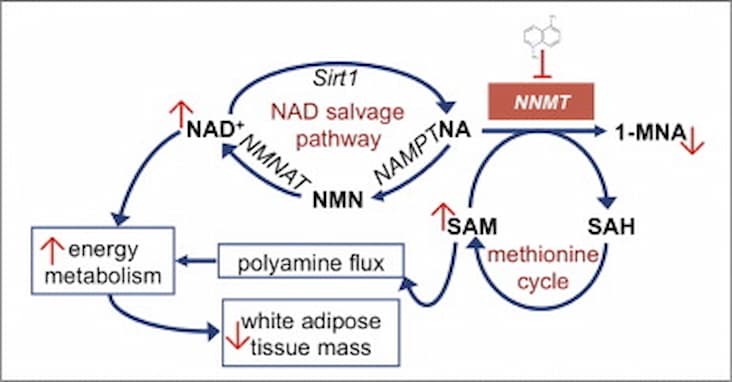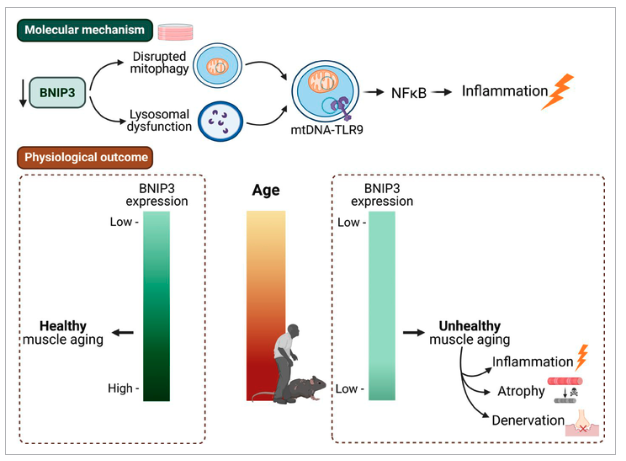- Messages
- 3,305
- Reaction score
- 1,551
- Points
- 113
I have some extra 5 Amino 1mq Choride version for sale.
5 Grams 5 Amino 1mq Choride powder....$120.00
Shipping will be an extra $10.00 via USPS Priority w/tracking.
Payment via BitCoin(preferred), Venmo, MG, WU, or CIM for established members.
Shoot me a message or post questions here. I will try and get packs out ASAP.
Most of you know me but those that don't I will provide refs upon request.
What is 5-AMINO-1?
5-amino-1MQ is a small molecule drug that functions to block the activity of an enzyme called nicotinamide N-methyltransferase (NNMT). NNMT plays a significant role in metabolism and energy and is predominantly active in fat tissue. By blocking NNMT, 5-amino-1MQ stimulates an increase in nicotinamide adenine dinucleotide (NAD+), a cofactor that is central to cellular metabolism, thereby increasing metabolic rate and activating a gene called sirtuin-1 (SIRT1). SIRT1 is also known as ‘the longevity gene’ because of its role in reducing the risk of diabetes, obesity, metabolic syndrome, atherosclerosis and other forms of cardiovascular disease, kidney disease, liver disease, neurodegeneration, and cancer.
In Layman’s terms
man measuring waist before medical weight lossThis means that 5-amino-1MQ allows your body to burn fat for energy while maintaining muscle mass preferentially. 5-amino-1MQ is both safe and effective for reversing and preventing diet-induced obesity. It is a potentially superior treatment option for individuals suffering from (or who are at risk for) type II diabetes and other metabolic comorbidities to obesity. Furthermore, the activation of SIRT1 by an increase in NAD+ suggests 5-amino-1MQ is a good option for patients who are looking to develop a comprehensive
anti-aging protocol.
What You Need to Know
5-amino-1MQ blocks an enzyme that plays a role in energy utilization. It functions to actively increase basal metabolic rate (BMR). This increase in BMR is often accompanied by an increase in appetite. For 5-amino-1MQ to work most effectively for fat loss, patients taking the drug should continue to operate at a caloric deficit, which means you consume fewer calories than you burn. Furthermore, patients can expect to see improved physical performance approx. two weeks after starting the medication.
5-Amino 1MQ (5-amino-1-methylquinoline) is a NNMTi inhibitor peptide molecule that is directly derived from methylquinolinium (MQ). The peptide called 5-amino-1MQ (5a1mq) is intended to help clinically obese persons to lose weight in a healthy and effective way.
It is available in two forms: Iodide and Chloride. The downside to the Iodide form, is the Iodide molecule comprises almost 50% of the powder, making it less
potent than the chloride form. Also, certain individuals must refrain from too much iodine in their diet.
PFD attachments test results.
5 Grams 5 Amino 1mq Choride powder....$120.00
Shipping will be an extra $10.00 via USPS Priority w/tracking.
Payment via BitCoin(preferred), Venmo, MG, WU, or CIM for established members.
Shoot me a message or post questions here. I will try and get packs out ASAP.
Most of you know me but those that don't I will provide refs upon request.
What is 5-AMINO-1?
5-amino-1MQ is a small molecule drug that functions to block the activity of an enzyme called nicotinamide N-methyltransferase (NNMT). NNMT plays a significant role in metabolism and energy and is predominantly active in fat tissue. By blocking NNMT, 5-amino-1MQ stimulates an increase in nicotinamide adenine dinucleotide (NAD+), a cofactor that is central to cellular metabolism, thereby increasing metabolic rate and activating a gene called sirtuin-1 (SIRT1). SIRT1 is also known as ‘the longevity gene’ because of its role in reducing the risk of diabetes, obesity, metabolic syndrome, atherosclerosis and other forms of cardiovascular disease, kidney disease, liver disease, neurodegeneration, and cancer.
In Layman’s terms
man measuring waist before medical weight lossThis means that 5-amino-1MQ allows your body to burn fat for energy while maintaining muscle mass preferentially. 5-amino-1MQ is both safe and effective for reversing and preventing diet-induced obesity. It is a potentially superior treatment option for individuals suffering from (or who are at risk for) type II diabetes and other metabolic comorbidities to obesity. Furthermore, the activation of SIRT1 by an increase in NAD+ suggests 5-amino-1MQ is a good option for patients who are looking to develop a comprehensive
anti-aging protocol.
What You Need to Know
5-amino-1MQ blocks an enzyme that plays a role in energy utilization. It functions to actively increase basal metabolic rate (BMR). This increase in BMR is often accompanied by an increase in appetite. For 5-amino-1MQ to work most effectively for fat loss, patients taking the drug should continue to operate at a caloric deficit, which means you consume fewer calories than you burn. Furthermore, patients can expect to see improved physical performance approx. two weeks after starting the medication.
5-Amino 1MQ (5-amino-1-methylquinoline) is a NNMTi inhibitor peptide molecule that is directly derived from methylquinolinium (MQ). The peptide called 5-amino-1MQ (5a1mq) is intended to help clinically obese persons to lose weight in a healthy and effective way.
It is available in two forms: Iodide and Chloride. The downside to the Iodide form, is the Iodide molecule comprises almost 50% of the powder, making it less
potent than the chloride form. Also, certain individuals must refrain from too much iodine in their diet.
PFD attachments test results.



